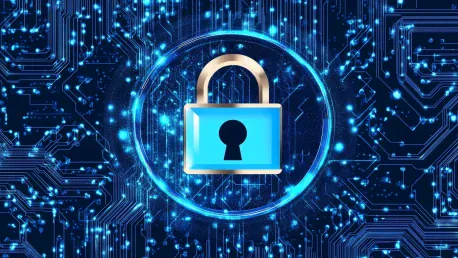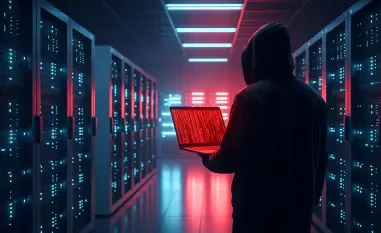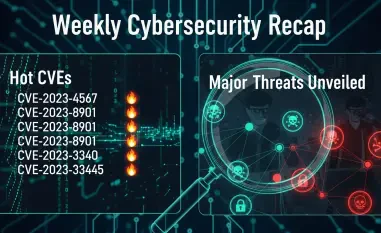In the rapidly evolving digital landscape, businesses are increasingly facing sophisticated cyber threats, many of which are driven by advancements in artificial intelligence (AI). This article explores how companies, particularly in Canada, are adapting to these AI-driven cybersecurity challenges. The insights are based on the annual cybersecurity analysis by Blake, Cassels & Graydon LLP, which highlights key trends and strategies being adopted by organizations to safeguard their operations.
Increased Cybersecurity Awareness and Training
Employee and Senior Management Training
Over the past year, there has been a significant rise in cybersecurity training initiatives within organizations. This trend is especially noticeable in larger businesses and high-risk industries such as technology and financial services. Companies are implementing comprehensive training programs for employees and senior management to better handle potential cyberattacks. These programs include simulated cyberattack scenarios, workshops on identifying phishing attempts, and regular updates on emerging threats. Through these meticulous training sessions, employees and leaders now have the knowledge to identify and counter sophisticated cyber threats, minimizing the chances of successful breaches.
Moreover, the emphasis on training extends beyond theoretical knowledge, incorporating practical exercises that simulate real-world scenarios. This hands-on approach helps individuals understand the nuances of cyber threats and develop quick-response strategies. Organizations are also fostering a culture of continuous learning, encouraging employees to stay updated on the latest cybersecurity trends and techniques. These initiatives not only boost individual capabilities but also reinforce an organization’s overall defense posture. Consequently, better-prepared workforces are pivotal in thwarting attempts by cybercriminals, emphasizing the crucial role of human vigilance in securing digital landscapes.
Investment in IT Departments
To bolster their defenses, many organizations are increasing their funding for IT departments. This investment ensures that the latest software and hardware defenses are in place, reducing the risk of breaches. IT departments are also being equipped with advanced tools to monitor and respond to threats in real-time. This proactive approach is crucial in maintaining a robust cybersecurity posture. By allocating more resources, companies can deploy sophisticated technologies like AI-based intrusion detection systems and next-gen firewalls, designed to provide layered security and thwart even the most complex attacks.
Additionally, the boosted investment allows IT departments to hire skilled cybersecurity professionals capable of managing and enhancing security protocols. These experts can conduct regular security audits, vulnerability assessments, and penetration testing to identify and rectify potential weak points. The real-time threat monitoring capabilities are supplemented with automated incident response systems, reducing reaction times and mitigating potential damage from breaches. This multifaceted strategy not only fortifies defenses but also establishes a resilient infrastructure capable of adapting to evolving cyber threats, ensuring the organization remains secure amid an ever-changing digital environment.
Discrepancy in Cybersecurity Preparedness
Challenges for Smaller Organizations
While large corporations have made significant strides in securing their operations, smaller organizations face considerable challenges. Entities such as hospitals, nonprofit organizations, and educational institutions often lack the resources to implement comprehensive cybersecurity measures. This disparity leaves them more vulnerable to cyberattacks, as they may not have the necessary tools or expertise to defend against sophisticated threats. Without the budget for advanced security systems and dedicated cybersecurity teams, these smaller entities are at higher risk of data breaches, ransomware attacks, and other forms of cybercrime.
These budget constraints also affect their ability to offer ongoing training and resources for staff, who are often the first line of defense against cyber threats. Consequently, smaller organizations become prime targets for cybercriminals who exploit these vulnerabilities. The limited support infrastructures mean that any successful breach is likely to have a far-reaching impact, affecting not only the organization’s operations but also the reputation and trust of stakeholders. Addressing these challenges requires innovative solutions and potentially external assistance to ensure a more equitable level of cybersecurity preparedness across all organizations.
Efforts to Bridge the Gap
Despite these challenges, efforts are being made to bridge the gap in cybersecurity preparedness. Smaller organizations are increasingly seeking partnerships with cybersecurity firms to enhance their defenses. Additionally, government initiatives and grants are being introduced to support these entities in building more resilient cybersecurity infrastructures. These collaborations help smaller entities access advanced cybersecurity technologies and expertise that they otherwise couldn’t afford, leveling the playing field against cyber threats.
Moreover, educational programs and community-driven initiatives are also being established to raise awareness and provide essential training for smaller organizations. By fostering a collaborative environment where knowledge and resources are shared, these efforts aim to create a robust defense network that protects all sectors. The increased focus on building partnerships and utilizing government support signifies a progressive move towards ensuring comprehensive cybersecurity preparedness. The ultimate goal is to create a unified front, where even the smallest organizations are equipped with the necessary tools and knowledge to fend off sophisticated cyber threats.
AI-Driven Sophistication of Cyber Threats
The Rise of Deepfakes
One of the most concerning developments in AI-driven cyber threats is the rise of deepfakes. Cybercriminals are using AI to create highly convincing voice and video impersonations, making it difficult for organizations to detect fraud. A notable example is a case where a multinational company in Hong Kong was deceived into transferring $25.6 million through deepfake videoconferences, where an employee believed they were following instructions from the company’s CFO. These sophisticated impersonation tactics exploit human vulnerabilities and trust, presenting a significant challenge for traditional security measures that are not equipped to handle such advanced threats.
The proliferation of deepfakes means organizations must adopt new strategies to verify the authenticity of communications. Enhanced verification processes, such as multi-factor authentication (MFA) and biometric recognition, are becoming essential to prevent fraudulent activities. Furthermore, raising awareness among employees about the existence and risks of deepfakes plays a critical role in safeguarding against these threats. By understanding how deepfakes operate and the potential indicators of such impersonation attempts, staff can become more vigilant and skeptical of unusual requests or instructions, thereby reducing the likelihood of successful attacks.
Advanced Phishing and Social Engineering
AI is also being used to enhance phishing and social engineering attacks. Cybercriminals can now craft highly personalized and convincing phishing emails that are more likely to deceive recipients. These advanced tactics require organizations to adopt more sophisticated detection and response mechanisms to protect against such threats. The AI-driven personalization of phishing emails includes leveraging data from social media profiles and other online sources to create messages that appear legitimate and relevant to the target, making them more likely to fall victim to these scams.
To combat these enhanced phishing and social engineering attacks, organizations are investing in more advanced email filtering systems and machine learning-based threat detection algorithms. These technologies can identify patterns and anomalies that suggest a phishing attempt, thereby preemptively blocking malicious emails. Additionally, regular phishing simulation exercises and continuous awareness training for employees help reinforce the importance of caution and skepticism. By staying informed about the latest phishing techniques and maintaining a proactive defense stance, organizations can mitigate the risks posed by these AI-driven cyber threats, protecting their sensitive information and ensuring operational continuity.
The Impact of Cybersecurity on Mergers and Acquisitions (M&A)
Scrutiny of Cybersecurity History
The increasing incidence of cyberattacks has led companies to scrutinize the cybersecurity history of potential acquisition targets more closely. During the due diligence process, purchasers commonly inquire about past cyber incidents, the responses to these incidents, and whether ransoms have been paid. This scrutiny is essential to avoid inheriting cybersecurity risks and associated liabilities. Understanding the history of cybersecurity incidents can reveal potential vulnerabilities and the effectiveness of the target company’s security measures, helping purchasers make informed decisions.
Moreover, this heightened scrutiny often uncovers gaps in the target’s cybersecurity posture that may require immediate attention post-acquisition. To address these concerns, acquiring companies are now routinely involving cybersecurity experts in their due diligence teams. These experts perform thorough evaluations of the target’s cybersecurity practices, infrastructure, and incident response capabilities. This comprehensive examination helps to ensure that the acquired entity meets the required cybersecurity standards, thereby reducing potential risks and protecting the overall strategic interests of the acquiring company.
Challenges in the Due Diligence Process
The focus on cybersecurity during M&A activities can complicate and delay the due diligence process. The absence of standardized protocols for evaluating cybersecurity risks often leads to fragmented communication and slower deal processes. Companies must conduct exhaustive investigations to obtain transparent and candid responses from acquisition targets regarding their cybersecurity practices. This thorough approach, while necessary, can be time-consuming and may even uncover issues that require renegotiation of the deal terms or lead to its abandonment altogether.
Furthermore, the need for detailed cybersecurity assessments means that legal and financial advisors must often coordinate closely with IT security experts, adding layers of complexity to the due diligence process. This multidisciplinary approach requires additional resources and careful management to ensure that all relevant aspects are sufficiently covered. Despite these challenges, the emphasis on cybersecurity is crucial for minimizing risks and ensuring a smooth integration post-acquisition. Companies are increasingly recognizing that a robust cybersecurity evaluation is integral to the success of M&A activities and to safeguarding their long-term investments.
The Growing Need for Unified Cybersecurity Protocols
Standardizing Cybersecurity Evaluations
The lack of standardized protocols for addressing cybersecurity during M&A activities highlights the need for a unified approach. Standardizing cybersecurity evaluations can streamline the due diligence process and ensure that all parties have a clear understanding of the risks involved. This approach can also facilitate better communication and collaboration between companies. By adopting common frameworks and best practices, organizations can simplify the evaluation process, making it more efficient and consistent, ultimately leading to quicker decision-making and reduced transaction costs.
Moreover, standardized protocols help in setting clear expectations about the level of cybersecurity maturity required, thus reducing ambiguities and mitigating potential conflicts during negotiations. These standards can also act as benchmarks for continuous improvement, encouraging companies to maintain high levels of cybersecurity readiness even post-acquisition. Consequently, a uniform approach to cybersecurity evaluations can significantly enhance the overall robustness of M&A activities, protecting both acquiring and target companies from unforeseen cyber risks and ensuring smooth operational transitions.
Collaborative Efforts and Industry Standards
In today’s rapidly evolving digital landscape, businesses are increasingly contending with sophisticated cyber threats, many of which are driven by advancements in artificial intelligence (AI). This article delves into how companies, particularly those based in Canada, are adapting to these AI-driven cybersecurity challenges. Based on the annual cybersecurity analysis conducted by Blake, Cassels & Graydon LLP, the article highlights crucial trends and strategies that organizations are embracing to protect their operations. The report underscores the growing importance of robust cybersecurity measures in light of AI’s role in both enhancing security protocols and enabling more complex attacks. Canadian companies are investing in new technologies, staff training, and more resilient cybersecurity frameworks to stay ahead of potential threats. They are also focusing on collaboration with governmental and private entities to share threat intelligence and best practices. This strategic adaptation is essential for maintaining operational integrity and client trust in an era where digital threats are constantly evolving and becoming more sophisticated.













